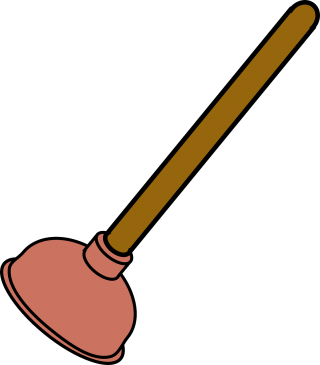Plungers, Augers, and Snakes: Tools Plumbers Use to Solve Commercial Plumbing Problems

Because the bathroom facilities in a commercial building see so much use, it’s inevitable things will go wrong from time to time. While your building maintenance crew will be able to handle most minor problems, sometimes the issue becomes severe enough that calling a professional plumber is your wisest option.
A plumber has the knowledge and tools to solve your problem without damaging your pipes or fixtures. Knowing a little something about those tools will help you understand how common repairs are made.
Plungers
While plungers are common tools for clearing clogged drains, not everyone knows how to choose the right plunger for the job or how to use a plunger correctly. There are two types of plungers: one for toilets and one for sinks. A toilet plunger, or flange plunger, has a circular rubber flange in the middle of the rubber cap. A sink plunger, or cap plunger, has only a rubber cap.
The plunger must be positioned correctly to create a seal. Once a seal is formed, the drain should be plunged vigorously for 15 to 20 seconds.
Snakes and Augers
A drain snake, another common household tool, is a long, flexible metal cable with a corkscrew-shaped end. It’s designed to be unwound and fed down the drain to cut through and push down a clog. While this tool can clear minor clogs, it’s not particularly effective on severely blocked drains and pipes. A professional plumber will bring in a similar, but more advanced tool known as a power auger.
A power auger is a flexible metal cable with interchangeable tips of varying sizes and shapes. The most common is a claw-like spring that expands to fit the pipe. Instead of being unwound by hand, a power auger is driven by an electric motor, giving it the strength it needs to break up larger clogs. Clogs like these as well as many other plumbing problems can usually be prevented with annual professional plumbing maintenance.
Pliers and Wrenches
When plumbers need to tighten a loose, leaky pipe or loosen a pipe to remove it, they have a variety of tools available to grip and turn the pipes as needed. Simple tongue-and-groove pliers, or adjustable pliers, are the go-to tool for most small pipes. For working with threaded pipes and fittings, plumbers use two pipe wrenches. One wrench is positioned to hold the pipe one place, and the second is used to turn the connected pipe.
A basin wrench is an indispensable tool for working with the nuts that secure sink faucets. This long wrench with rotating, spring-loaded jaws lets the plumber work effectively in tight spaces. For working with hexagon nuts, plumbers carry a set of adjustable wrenches in a range of sizes.
Cutting and Soldering Tools
If your pipes have suffered damage or serious wear, the plumber might need to replace them. Several tools are available for use in the process of replacing pipes, fittings, and fixtures. The plumber might use a hacksaw to cut through metal or plastic pipes or cut off parts that can’t be removed otherwise. A metal file will be used to smooth down edges of newly cut pipe sections.
If the plumber needs to install copper pipes or fittings, they’ll use a propane torch to solder the components in place. Plumbers also carry heat-resistant mats and cloths to protect nearby items from sparks.
Our goal is to help educate our customers about Plumbing, HVACR, Fire Protection, and Alarm Systems in Mechanical, Commercial, and Residential settings. For more information about how a plumber can help you keep your bathroom facilities in good working order and to view projects we’ve worked on, visit our website!







